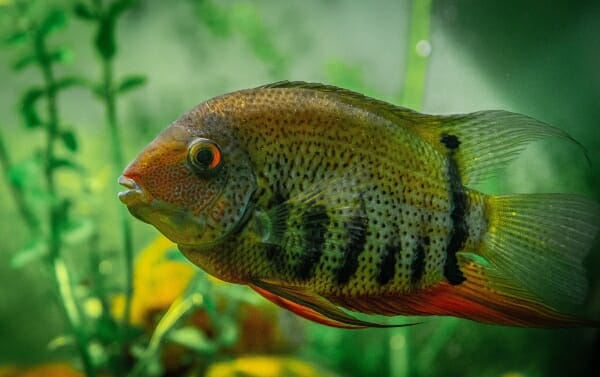

Keep that in mind and size up accordingly based on how many fish you plan to keep. If you plan on keeping more than one cichlid, it’s wise to allocate no less than five additional gallons per fish. The space also provides enrichment and enough space to create the right environment. With 55 gallons, a full-grown red zebra cichlid will have ample room and should stay out of trouble. Cramped tanks can cause a nightmare of aquatic aggression, turning these otherwise carefree fish into a mess of stress. Red zebra cichlids aren’t particularly large, but they are territorial. This species needs to live in an aquarium that holds at least 55 gallons.Īuthor Note: Ideally, the dimensions of the tank should be horizontally oriented with a minimum of 48 inches of swimming space. Tank SizeĪn appropriately sized tank is one of the most important things you need to start your red zebra cichlid’s life on the right foot.

But like any other species, it has its preferences and unique quirks.įollow these care guidelines, and you’ll have no problem keeping these fish healthy for years to come. It’s adaptable and doesn’t have many distinct care requirements outside what you’d typically experience with freshwater fish. Overall, the red zebra cichlid is a relatively easy fish to take care of in captivity. Genetics can also come into play, but poor husbandry can cause unnecessary stress and open the fish up to many diseases (more on that later). It’s impossible to make guarantees for any fish, but the red zebra cichlid usually has a lifespan of five to ten years when given proper care.Īs always, the quality of their habitat, the diet you provide, and how well you maintain the tank make a difference. They’re not so big that you need a massive tank, but they’re large enough to appreciate their beauty even from across the room. Most aquarists would agree that the size of this species is just right for the hobby. A full-grown red zebra cichlid reaches a maximum size of around five inches long. This species isn’t the biggest member of the cichlid family. This is an easy way to tell if you’re looking at a male or female. Males have four to seven spots, while females can have up to three or none at all. Red zebra cichlids have egg-shaped spots, usually in a high-contrast color, making them highly visible. Some fish have a bold stripe on the dorsal fin or leopard-like dotting on the caudal fin.Īuthor Note: One of the most defining features is on the anal fin. Their fins are ray-shaped and usually transparent. The dorsal fin is expansive, stretching most of the fish’s length behind the head. The profile is sleek, and the head is slightly rounded to a soft point. They have a signature cichlid body shape. Regardless of the color, these fish have many universal features. The most sought-after varieties are multi-colored or have striped patterns. You can find red zebras in shades of blue, beige, pink, yellow, brown, and more. For this reason, some pet stores label them “assorted African cichlids.” That means they come in a wide range of colors. Some specimens have the signature fiery color, but this species is polymorphic. Appearanceĭespite its name, the red zebra cichlid is not always red. But the proper care and planning can make them wonderful additions to your aquarium. Like other cichlids, these freshwater fish can pose some unique challenges. In captivity, they’re often the species of choice for beautiful hardscaped aquariums. They’re rock-dwellers residing in caves and rocky habitats in the wild. These vibrantly colored cichlids are beautiful, and they prefer to live in unique environments.


 0 kommentar(er)
0 kommentar(er)
